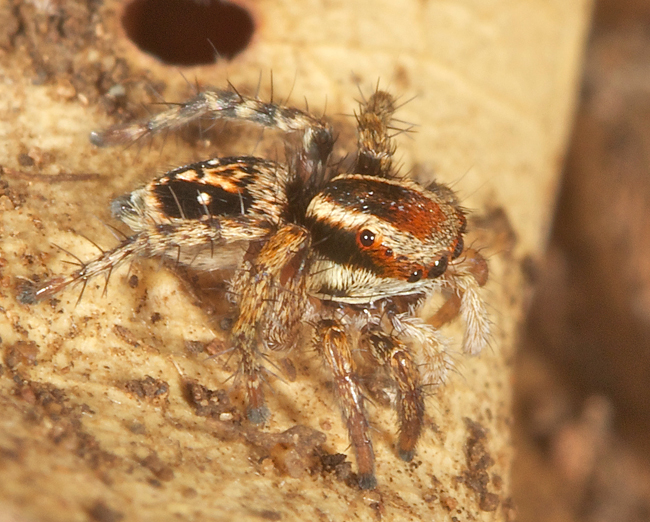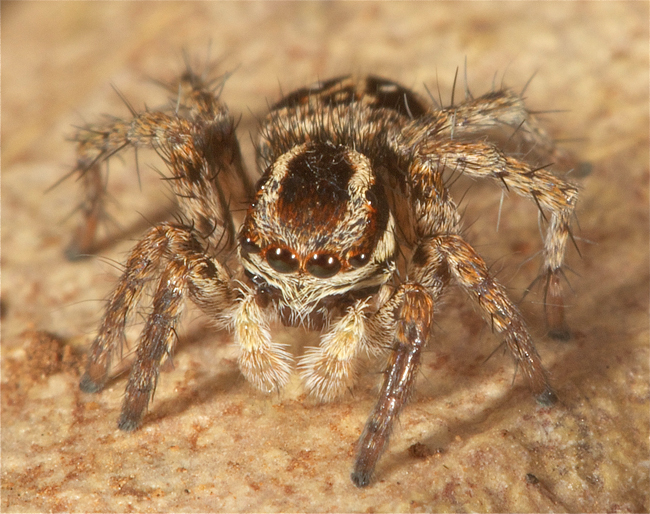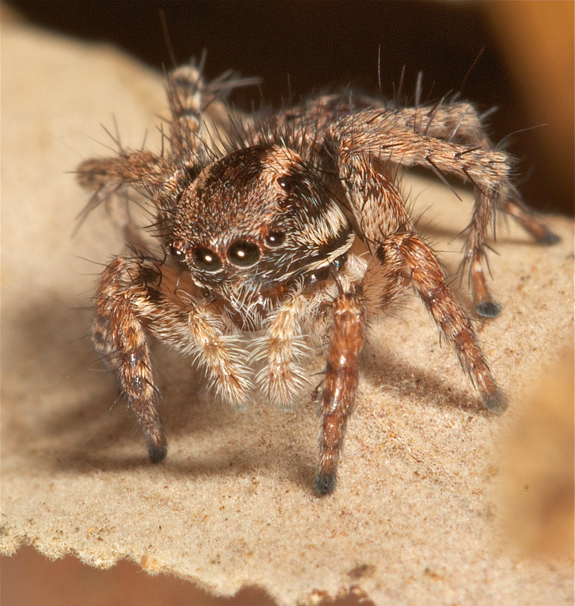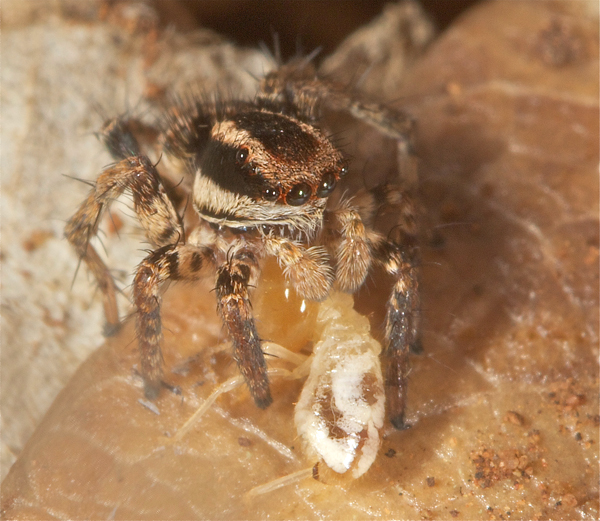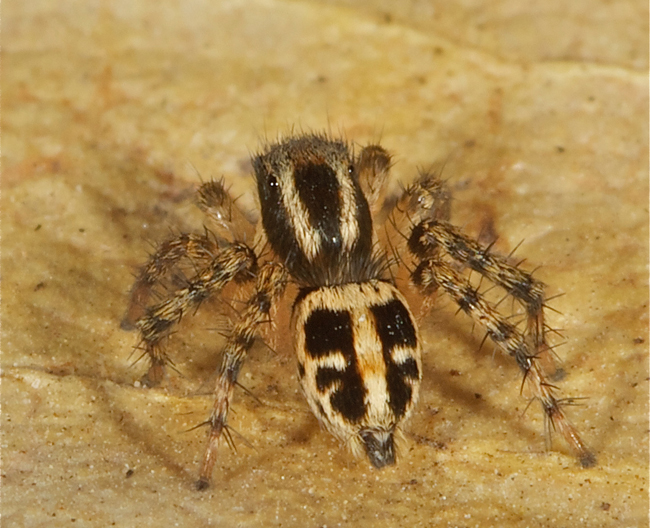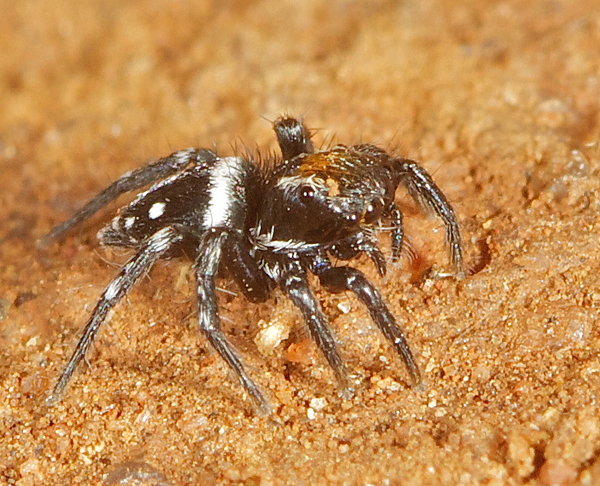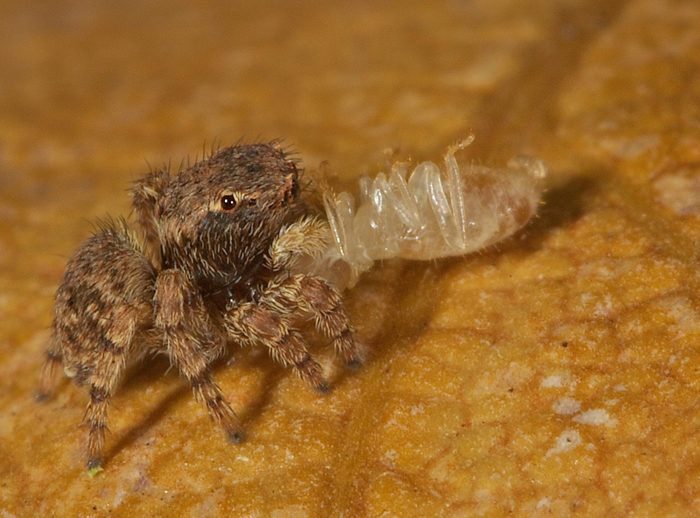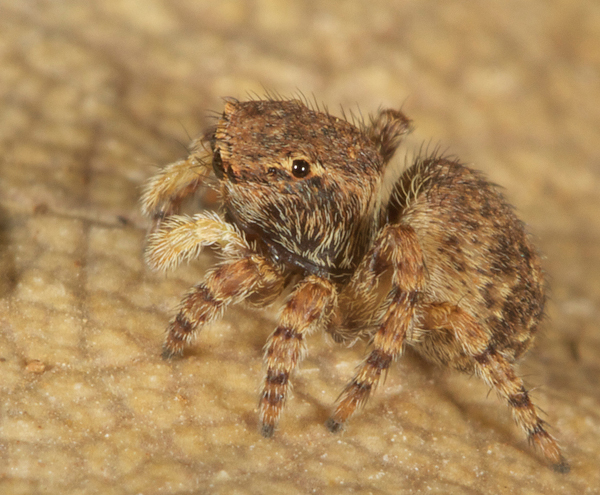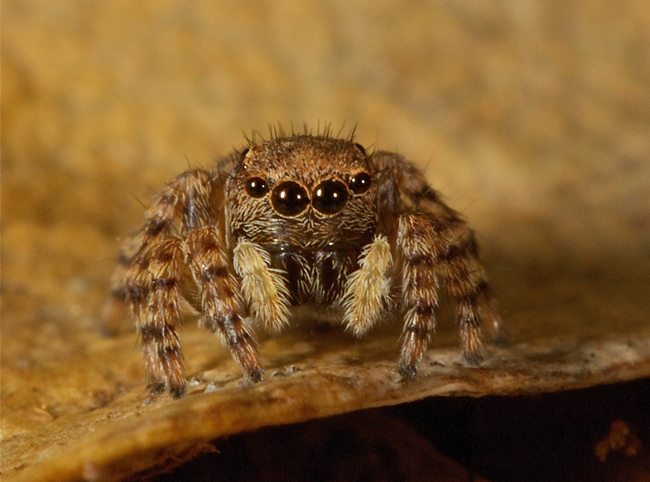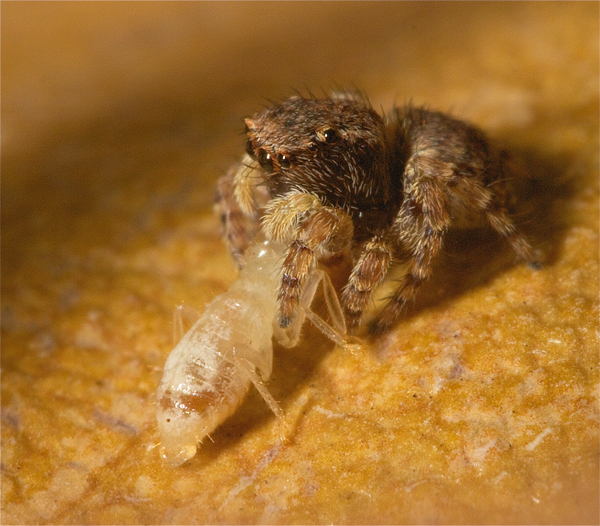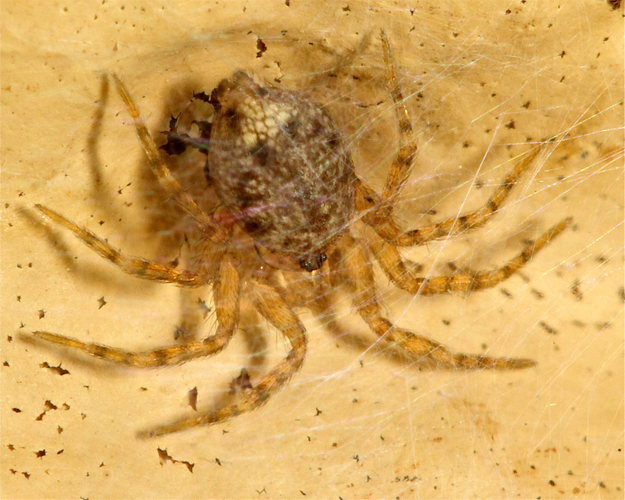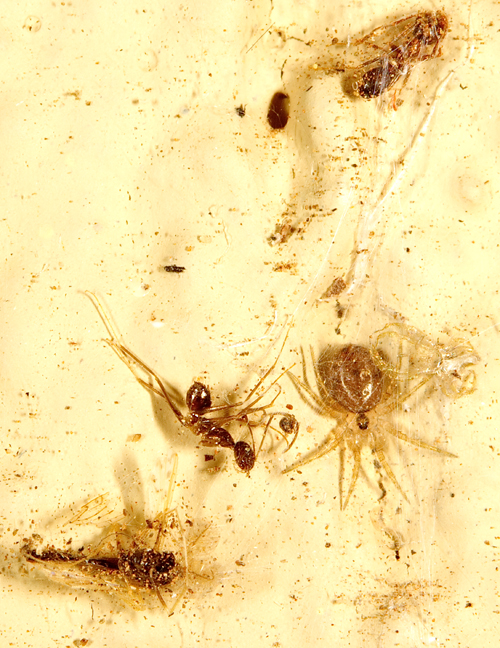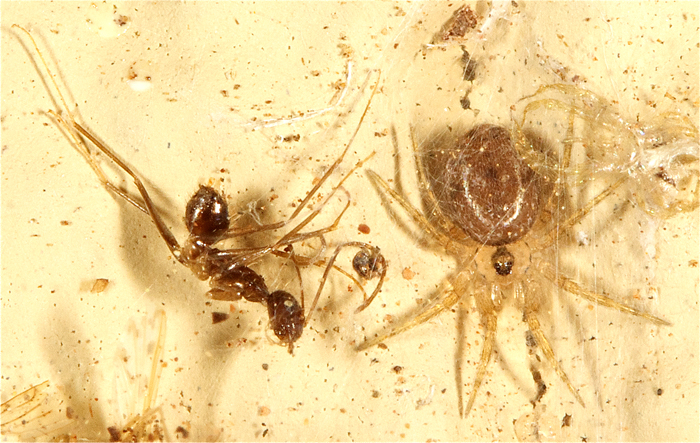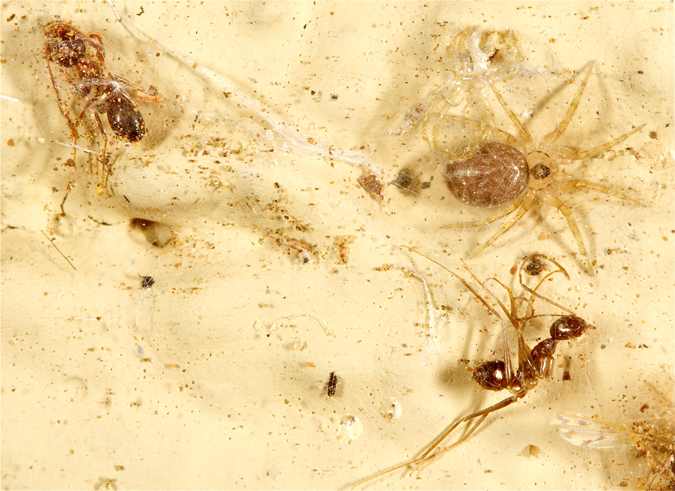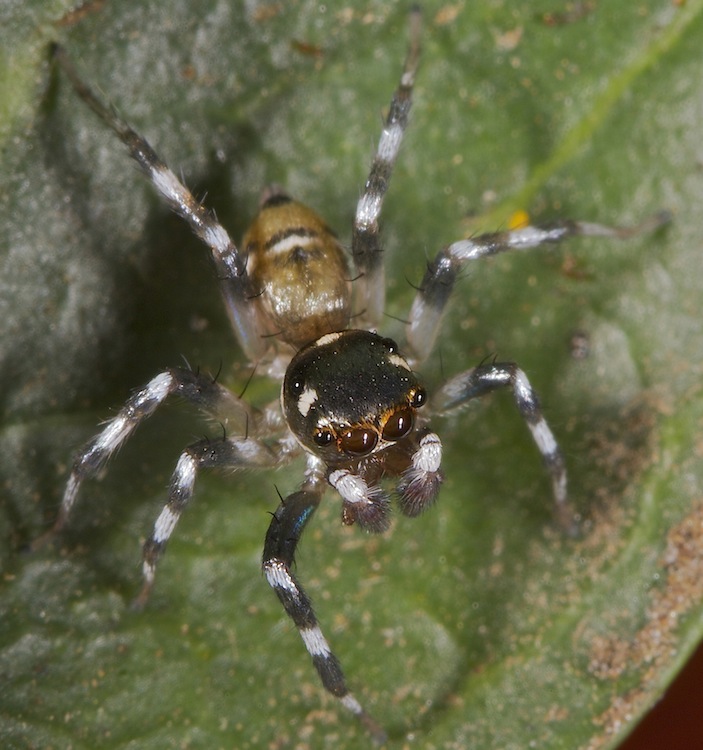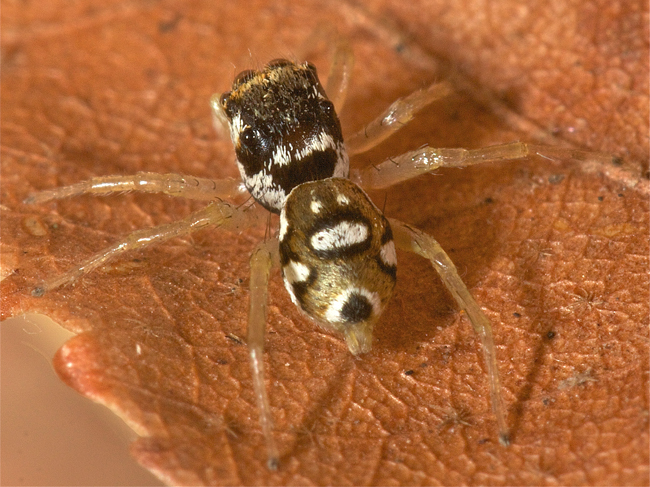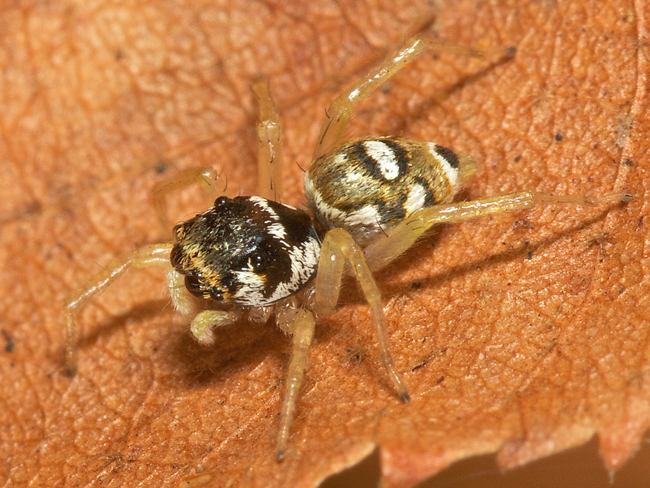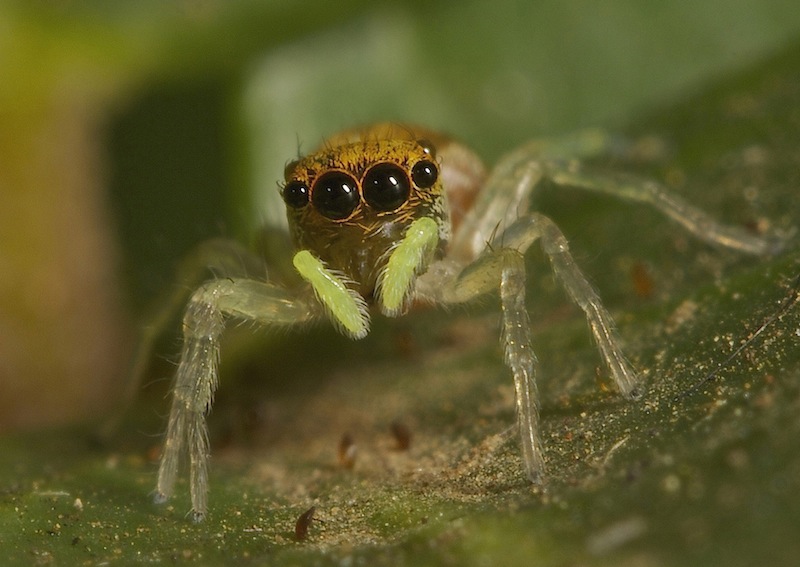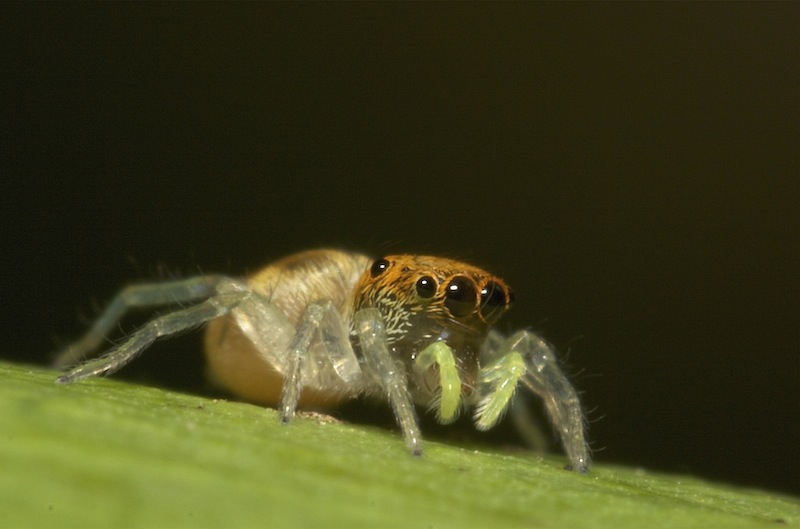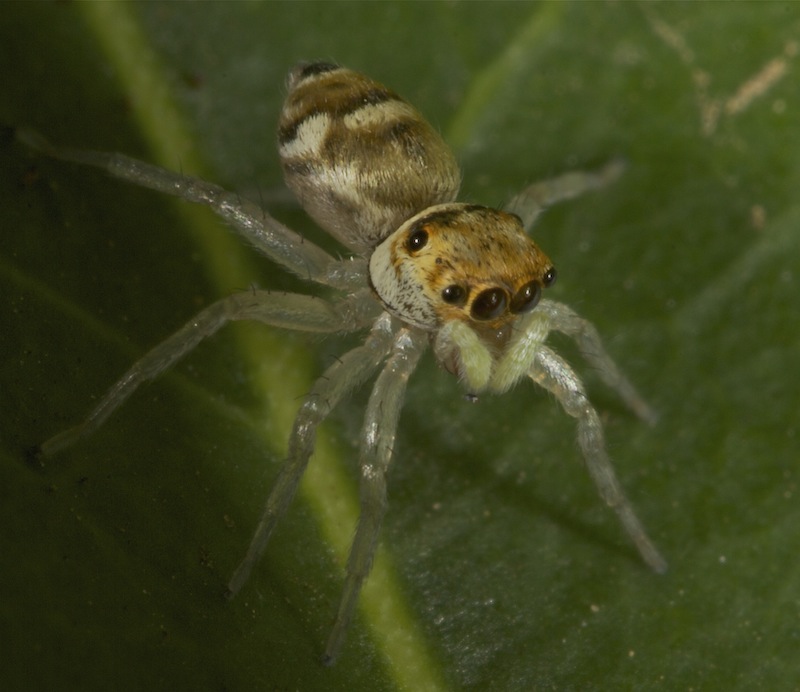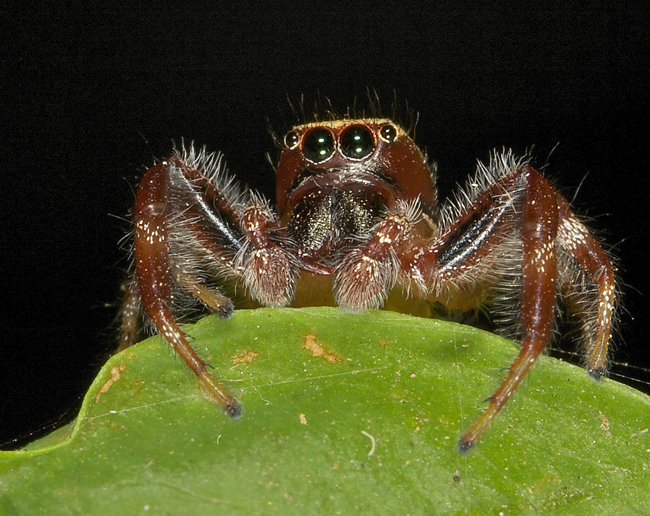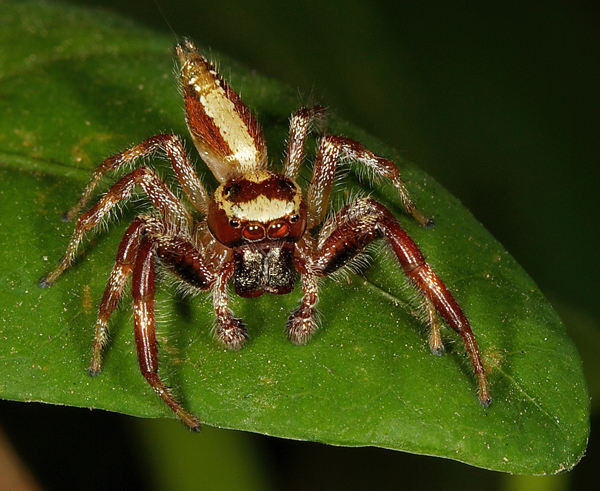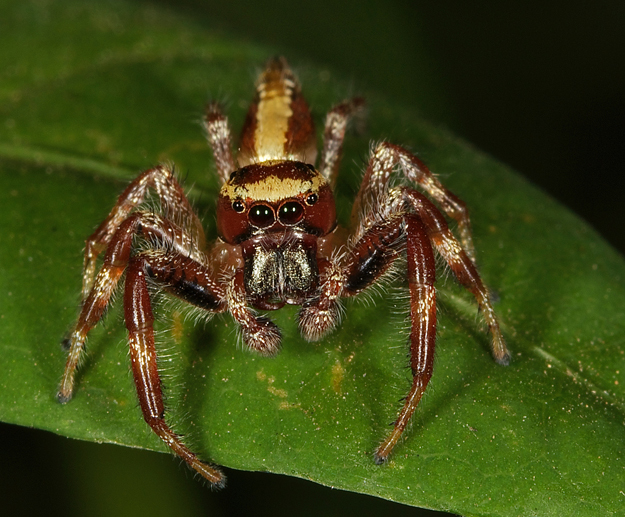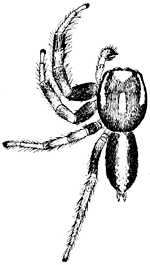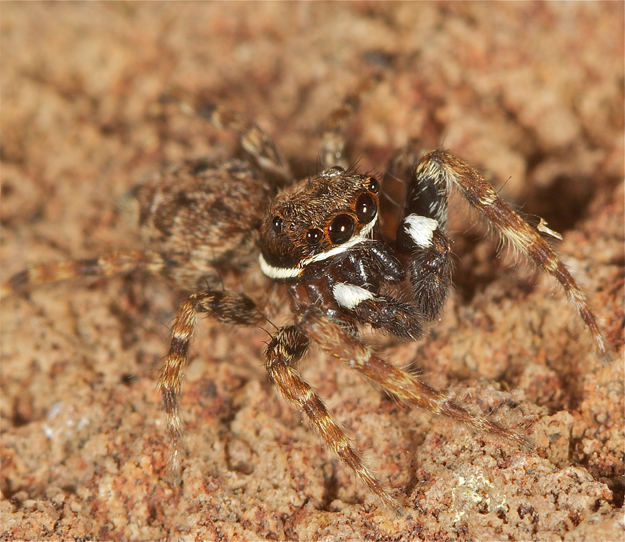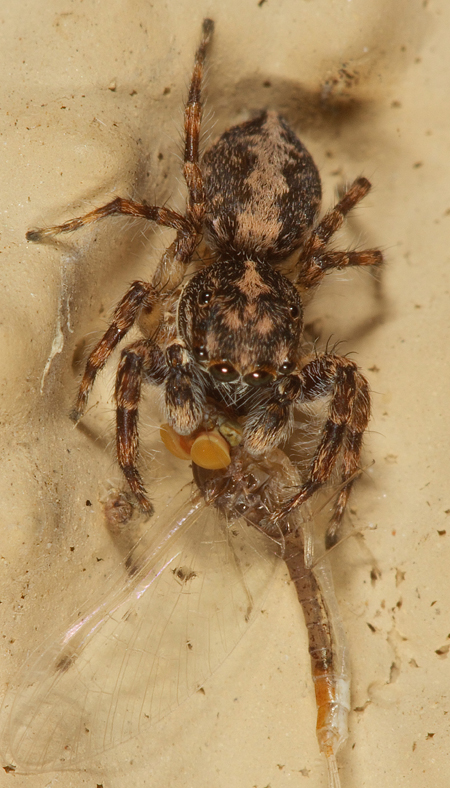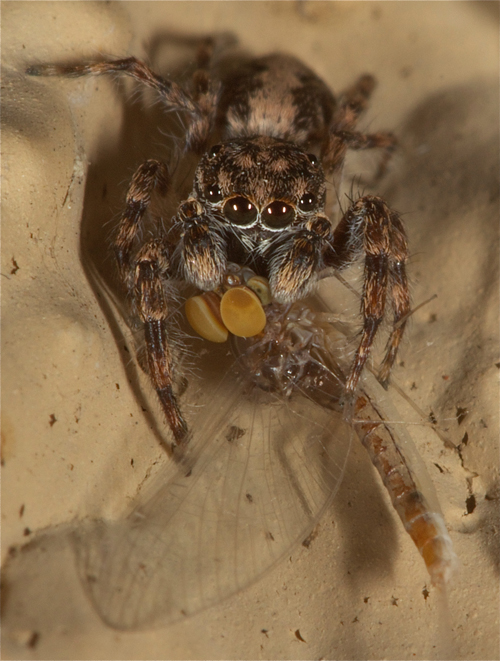Re: AW Arachnid Book: Spiders (Araneae) - Photos & Descriptions
Posted: Mon Apr 20, 2020 7:49 pm
Jumping Spider Natta cf. horizontalis Karsch, 1879
Family Salticidae
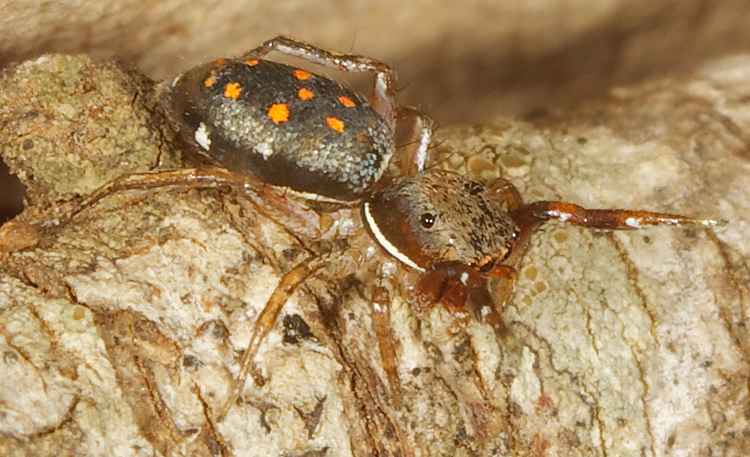
Kruger Lower Sabie Camp by ExF (female)
Description
Size: TL female and male 4-5 mm. Carapace is blackish with a narrow white band around the edge, and iridescent scales which give this species a metallic appearance. Eyes circled with red setae. Abdomen is black with small bright red dots and white spot above spinnerets. Leg I black with white spot at apex of patella and tibiae; legs II to IV are yellow to light brown.
Distribution
Widespread in the Afrotropical Region. In South Africa known from the Gauteng, Mpumulanga and KwaZulu-Natal provinces, Free State and Northern Cape provinces.
Habitat and biology
(Same as for N. Chionogaster) This species is usually found in the vicinity of foraging ants, especially Anoplolepis custodiens F. Smith, which it mimics in its movements (by running in short darts and moving the forelegs up and down to resemble antennae movements), and metallic scales on the body.
https://www.ispotnature.org/communities ... long-story
https://www.jumpingspiders.co.za/gallery.html#n-link
https://wsc.nmbe.ch
https://bioone.org/journals/african-inv ... .0105.full
Field Guide to South African Spiders, Ansie Dippenaar-Schoeman - 2014
Family Salticidae

Kruger Lower Sabie Camp by ExF (female)
Description
Size: TL female and male 4-5 mm. Carapace is blackish with a narrow white band around the edge, and iridescent scales which give this species a metallic appearance. Eyes circled with red setae. Abdomen is black with small bright red dots and white spot above spinnerets. Leg I black with white spot at apex of patella and tibiae; legs II to IV are yellow to light brown.
Distribution
Widespread in the Afrotropical Region. In South Africa known from the Gauteng, Mpumulanga and KwaZulu-Natal provinces, Free State and Northern Cape provinces.
Habitat and biology
(Same as for N. Chionogaster) This species is usually found in the vicinity of foraging ants, especially Anoplolepis custodiens F. Smith, which it mimics in its movements (by running in short darts and moving the forelegs up and down to resemble antennae movements), and metallic scales on the body.
https://www.ispotnature.org/communities ... long-story
https://www.jumpingspiders.co.za/gallery.html#n-link
https://wsc.nmbe.ch
https://bioone.org/journals/african-inv ... .0105.full
Field Guide to South African Spiders, Ansie Dippenaar-Schoeman - 2014
